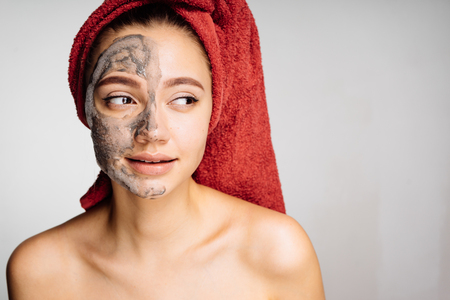1. Understand What Causes Hyperpigmentation
Before you can treat hyperpigmentation—especially if you have sensitive skin—it’s important to understand what’s causing those dark spots in the first place. Hyperpigmentation happens when your skin produces too much melanin, the pigment that gives your skin its color. This overproduction is usually triggered by a few common factors.
Main Causes of Hyperpigmentation
| Trigger | Description | Impact on Sensitive Skin |
|---|---|---|
| Sun Exposure | UV rays stimulate melanin production as a way to protect your skin, often resulting in sunspots or age spots. | Sensitive skin may react more intensely to UV damage, increasing the risk of irritation and uneven pigmentation. |
| Hormonal Changes | Conditions like pregnancy or birth control use can cause melasma, a type of pigmentation caused by hormone fluctuations. | Sensitive skin can become more reactive during hormonal shifts, making discoloration harder to manage. |
| Inflammation | Acne, eczema, or even minor cuts can lead to post-inflammatory hyperpigmentation (PIH). | Sensitive skin is more prone to inflammation, which increases the likelihood of PIH after breakouts or irritation. |
Why Sensitive Skin Needs Special Care
If you have sensitive skin, it means your skin barrier is more easily disrupted. Harsh treatments like strong acids or aggressive exfoliants can do more harm than good—causing redness, burning, or even more pigmentation from irritation. That’s why it’s essential to choose gentle methods and ingredients that soothe while treating pigmentation.
Common Signs Your Skin Is Sensitive:
- Easily irritated by skincare products
- Redness and stinging after applying certain ingredients
- Tightness or dryness after cleansing
- Frequent breakouts or rashes when trying new products
Understanding these triggers helps you take a smarter approach to fading dark spots without compromising your skin’s health. In the next section, we’ll explore safe and effective treatments specifically suited for sensitive skin types.
2. Opt for Gentle, Fragrance-Free Ingredients
When treating hyperpigmentation on sensitive skin, it’s essential to choose ingredients that are both effective and soothing. Many products on the market contain harsh chemicals or added fragrances that can trigger redness, itching, or breakouts—especially if your skin is already prone to irritation. Instead, look for fragrance-free formulas made with gentle yet powerful ingredients that support your skins natural balance while helping to fade dark spots.
Why Fragrance-Free Matters
Fragrances in skincare—whether synthetic or natural—are one of the most common causes of allergic reactions and irritation. While they might make a product smell nice, they don’t provide any benefit for your skin. In fact, avoiding fragrance is one of the simplest ways to reduce the risk of flare-ups, especially when using active treatments like serums and creams.
Top Soothing Ingredients That Fight Hyperpigmentation
Here are three standout ingredients that work well for treating discoloration without upsetting sensitive skin:
| Ingredient | Benefits | Skin Sensitivity Rating |
|---|---|---|
| Niacinamide (Vitamin B3) | Helps brighten skin tone, reduces dark spots, calms inflammation, and supports the skin barrier. | Very gentle — suitable for all skin types including rosacea-prone skin. |
| Azelaic Acid | Reduces pigmentation and redness; has anti-inflammatory and antibacterial properties. | Mild — often recommended by dermatologists for sensitive and acne-prone skin. |
| Licorice Root Extract | Natural brightener that helps fade existing dark spots and soothes irritated skin. | Gentle — ideal for calming redness and inflammation. |
How to Incorporate These Ingredients Into Your Routine
You don’t need a complicated routine to see results. Try starting with one product that contains one of these ingredients, such as a serum or moisturizer labeled “fragrance-free” and “for sensitive skin.” Use it once daily and monitor how your skin reacts before introducing another new product.
Pro Tip:
If you’re using multiple actives, alternate them throughout the week rather than layering them all at once. This approach helps minimize the risk of irritation while still targeting pigmentation effectively.
Treating hyperpigmentation doesn’t have to come at the cost of your skin’s comfort. By choosing gentle, fragrance-free options like niacinamide, azelaic acid, and licorice root extract, you can lighten dark spots while keeping sensitivity in check.

3. Prioritize Daily Sun Protection
One of the most important steps in treating hyperpigmentation—especially if you have sensitive skin—is protecting your skin from the sun every single day. Even on cloudy days or when youre mostly indoors, UV rays can still penetrate windows and worsen dark spots. Thats why using a broad-spectrum sunscreen isnt just a suggestion—its a must.
Why Broad-Spectrum SPF Matters
Broad-spectrum sunscreens protect your skin from both UVA and UVB rays. UVA rays can prematurely age your skin and trigger pigmentation, while UVB rays can cause burns and further irritation. For those with sensitive skin, choosing the right sunscreen helps prevent more damage without causing redness or breakouts.
Best SPF Practices for Sensitive Skin
If your skin reacts easily to products, look for sunscreens labeled “mineral” or “physical” rather than chemical ones. Mineral sunscreens use ingredients like zinc oxide or titanium dioxide that sit on top of the skin and reflect UV rays instead of absorbing them, making them gentler for sensitive types.
What to Look for in a Sunscreen
| Feature | Why It Matters |
|---|---|
| SPF 30 or higher | Offers strong protection against UVB rays |
| Broad-spectrum | Shields from both UVA and UVB rays |
| Fragrance-free | Reduces risk of irritation for sensitive skin |
| Mineral-based (zinc oxide/titanium dioxide) | Gentle, non-irritating option for daily wear |
| Non-comedogenic | Won’t clog pores or cause breakouts |
How to Apply Sunscreen Correctly
- Apply it every morning: Make it the last step in your skincare routine before makeup.
- Use enough: A nickel-sized amount for your face is usually enough.
- Reapply every two hours: Especially if youre outdoors or sweating.
- Don’t forget key areas: Ears, neck, and even the back of your hands need coverage too.
Sunscreen isnt just about preventing sunburn—its one of the most effective ways to stop hyperpigmentation from getting worse. By making SPF part of your daily skincare habit, youre not only protecting your sensitive skin but also giving any treatments youre using a better chance to work effectively.
4. Incorporate Barrier-Repairing Skincare
When youre treating hyperpigmentation and have sensitive skin, its super important to keep your skin barrier strong and healthy. A damaged barrier can lead to more irritation and make it harder for your skin to tolerate brightening ingredients like vitamin C or AHAs. That’s why adding barrier-repairing skincare into your routine is a smart move.
Why Your Skin Barrier Matters
Your skin barrier acts like a shield, protecting you from environmental stressors, bacteria, and moisture loss. If it’s compromised, you’re more likely to experience redness, stinging, dryness, and increased sensitivity—which makes treating dark spots even trickier.
Key Ingredients That Help Repair the Skin Barrier
Look for moisturizers that contain ingredients known to support and rebuild the skin’s natural defense layer. These ingredients not only help lock in hydration but also make your skin more resilient to active treatments.
Top Barrier-Boosting Ingredients
| Ingredient | How It Helps |
|---|---|
| Ceramides | Replenish natural lipids in the skin to strengthen the barrier and prevent moisture loss. |
| Fatty Acids | Nourish the skin and support its ability to protect itself from irritants. |
| Hyaluronic Acid | Deeply hydrates by attracting water into the skin, helping maintain plumpness and comfort. |
How to Use Barrier-Repairing Products in Your Routine
If youre using active ingredients like niacinamide or licorice root extract to fade dark spots, apply a barrier-repairing moisturizer afterward to calm and hydrate your skin. For even better results, use a gentle cleanser beforehand and avoid harsh scrubs or alcohol-based toners.
Pro Tip:
If your skin feels tight or irritated after applying a treatment product, try layering a ceramide-rich moisturizer underneath next time. This “buffer” technique can minimize sensitivity while still letting you get the benefits of actives.
By making sure your skincare routine includes products that restore and protect your skin barrier, youll create a healthier environment for treating hyperpigmentation—without triggering flare-ups or discomfort.
5. Consult a Dermatologist for Personalized Solutions
When it comes to treating hyperpigmentation—especially if you have sensitive skin—seeking professional help can make a world of difference. A board-certified dermatologist can assess your unique skin type, identify the root cause of your discoloration, and create a personalized treatment plan that’s both effective and gentle.
Why see a dermatologist? Because not all dark spots are created equal. Some may be caused by sun exposure, others by hormonal changes or inflammation. Using the wrong product—or even the right product in the wrong way—can lead to irritation or worsen sensitivity.
What Can a Dermatologist Offer?
Here’s a quick look at how dermatologists can help:
| Treatment Option | Description | Sensitivity-Friendly? |
|---|---|---|
| Prescription Topicals | Stronger ingredients like hydroquinone, tretinoin, or azelaic acid prescribed in the right concentrations | Yes, when tailored to your skin type |
| Chemical Peels | Mild peels using acids like lactic or mandelic acid for gentle exfoliation | Yes, when performed by a professional |
| Laser Treatments | Targeted light therapy to break down pigmentation | Yes, with low-intensity lasers suitable for sensitive skin |
| Microneedling | Tiny needles stimulate collagen and reduce pigmentation over time | Yes, when done by trained professionals with proper aftercare |
Customized Skincare Regimens
A dermatologist doesn’t just treat spots—they help you build a skincare routine from the ground up. This might include recommending fragrance-free cleansers, barrier-repair moisturizers, and mineral-based sunscreens that won’t trigger flare-ups.
Pro Tip:
If youre worried about cost or access, many dermatology offices offer consultations via telehealth. Its an easy way to get expert advice without leaving your home.


